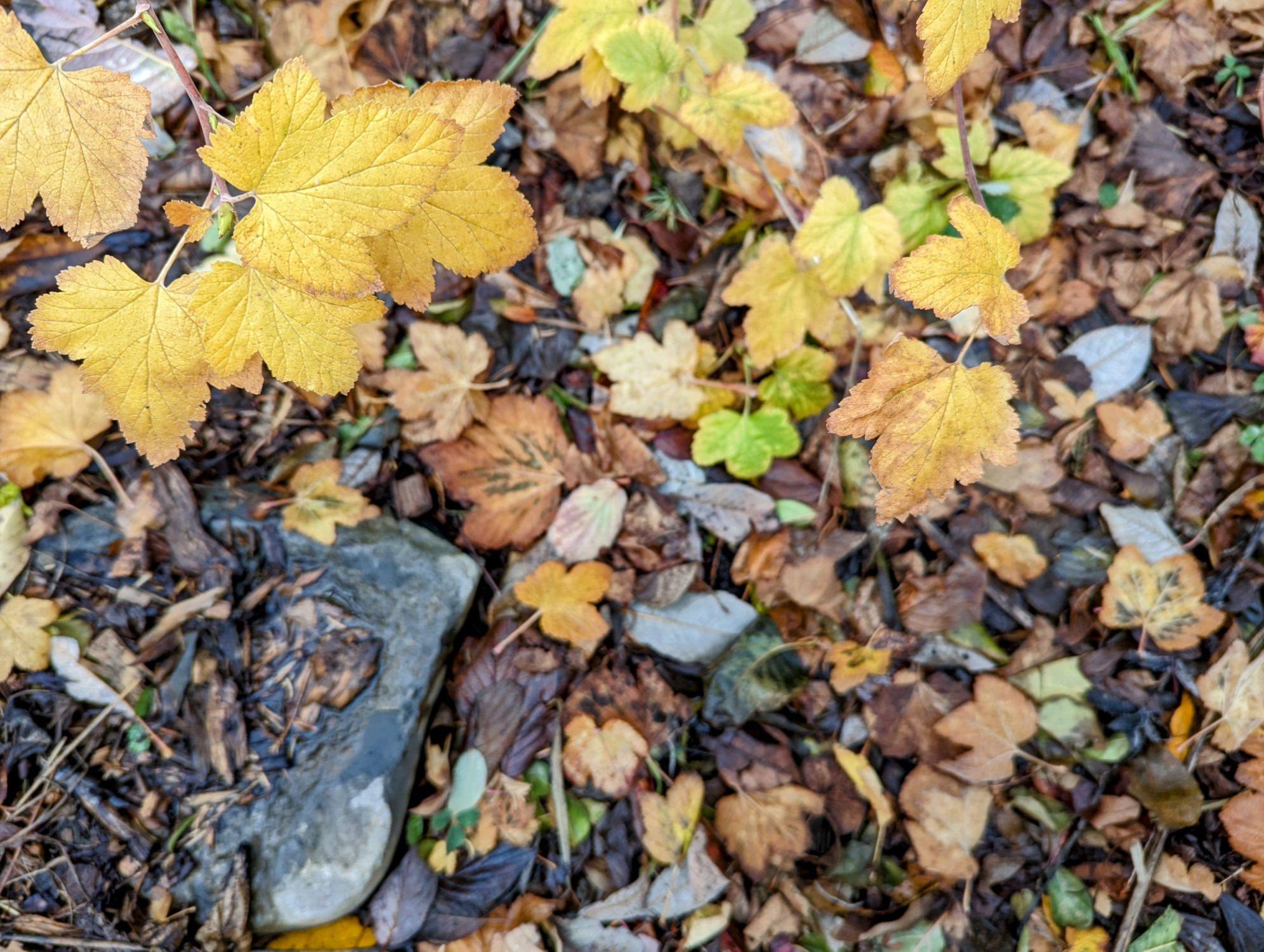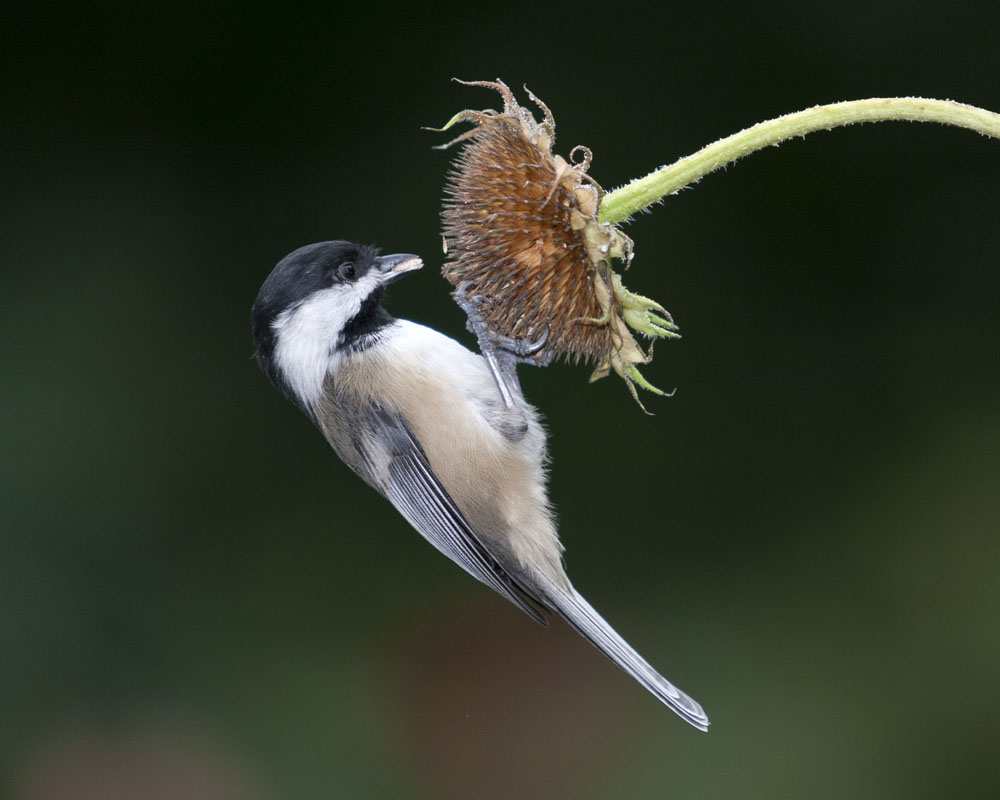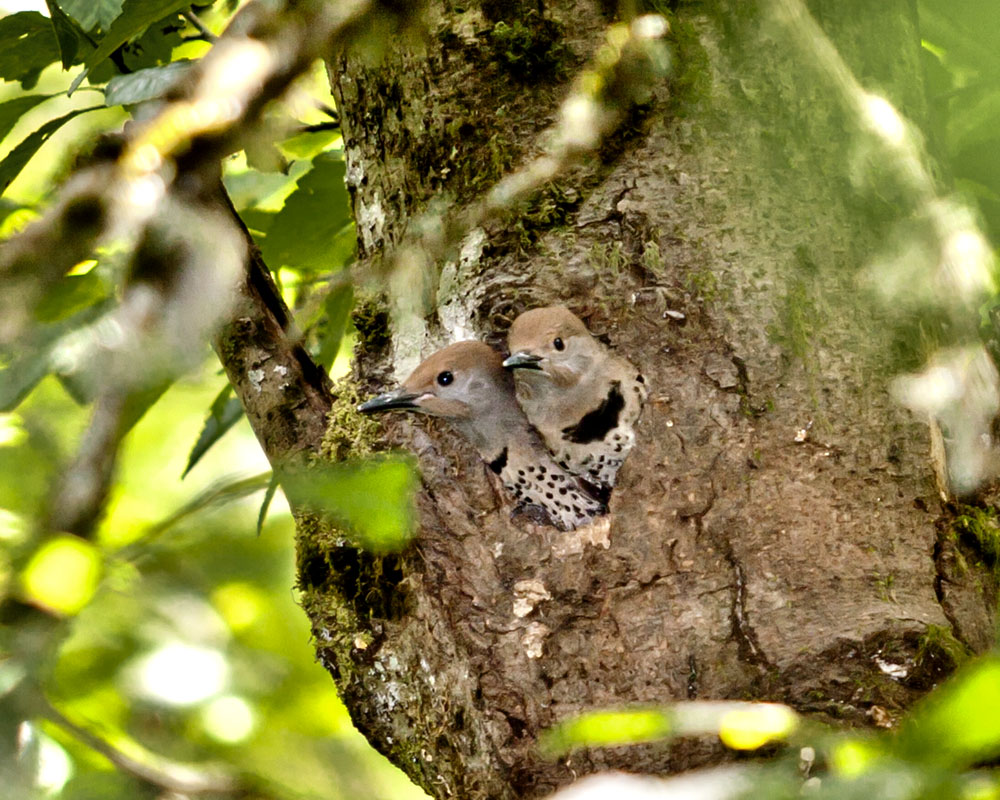Written by Elizabeth Brosig
As fall is coming to a close many of us have leaves covering our yards and dead flower stalks left over from summer blooms. Although it might appear messy, it’s actually best to leave the leaves on the ground and let the flower stalks stay standing until spring, because a messy winter garden is great for wildlife. Here are some tips to help wildlife in your yard even during the winter.

Leave the leaves!
Fallen leaves are so important to insects, birds, and the soil. At the end of summer bumble bee queens burrow underground, often in soil protected by fallen leaves, and wait for the warmer temperatures of spring to emerge. Many native butterflies overwinter under these fallen leaves as eggs, larvae, pupae, and adults. If we rake, blow, or otherwise remove these fallen leaves, we are removing valuable winter habitat and protection from our native pollinators. Additionally, you’ll be removing a food source for our native winter birds. During the winter it’s common to see birds kicking around fallen leaves for food hidden underneath. And lastly, fallen leaves provide mulch protection and nutrients to the soil and your plants. For more information regarding the benefits of fallen leaves in your garden, check out this blog post from ‘Real Gardens Grow Natives’: https://realgardensgrownatives.com/?p=1639

Leave the annual and perennial flower stalks that have gone to seed.
Many birds rely on the seeds of dead flowers as food during the winter. Additionally, many of our native bees and pollinators overwinter in hollow flower stalks, and some native butterflies spend the winter in chrysalises hanging from stems. To protect our native pollinators, it’s best to leave the stalks standing until spring when you hear the buzz of pollinators in the air.

Leave the snags and nurse logs.
Dead trees (called snags) and fallen wood (called nurse logs) provide tremendous habitat for wildlife. Insects find shelter and food. Cavity nest birds, like the Northern Flickers in the photo above, need dead trees to raise their young. Birds and mammals use snags to store food, such as the acorn woodpecker, and some small mammals, such as racoons, will nest in hollow tree trunks. Additionally, when dead trees fall into the creek, they provide incredibly valuable habitat and protection for salmon, lamprey, and other aquatic organisms. Leave your dead tree standing and maybe next spring you’ll get to watch some baby birds grow up. For more information regarding snags and fallen wood, refer to this publication from the Washington Department of Fish and Wildlife: https://backyardhabitats.org/wp-content/uploads/2017/07/Snags-Living-with-urban-wildlife.pdf

Provide clean water for wildlife
You may think that with all of the precipitation we get in Oregon, that fresh water is one of the last things we need to provide for wildlife during the winter, but with freezing temperatures fresh water isn’t always easy to find. By putting out clean water and replacing that water if it freezes, you are providing hydration and a bathing source for many of our birds and mammals.
There are many things you can do for wildlife this winter and the best part is that most of these things require you to do nothing. So relax, cozy up next to a window, and watch as wildlife appreciates your habitat rich garden.
If you’re interested in learning more, check out these additional resources:
- ‘After the Ice Storm: Assessing Tree Damage and Moving Forward’ by Clackamas Soil and Water Conservation District.
- ‘Take Care During Fall (and Spring) Garden “Clean-ups” ‘ by Real Gardens Grow Natives.
